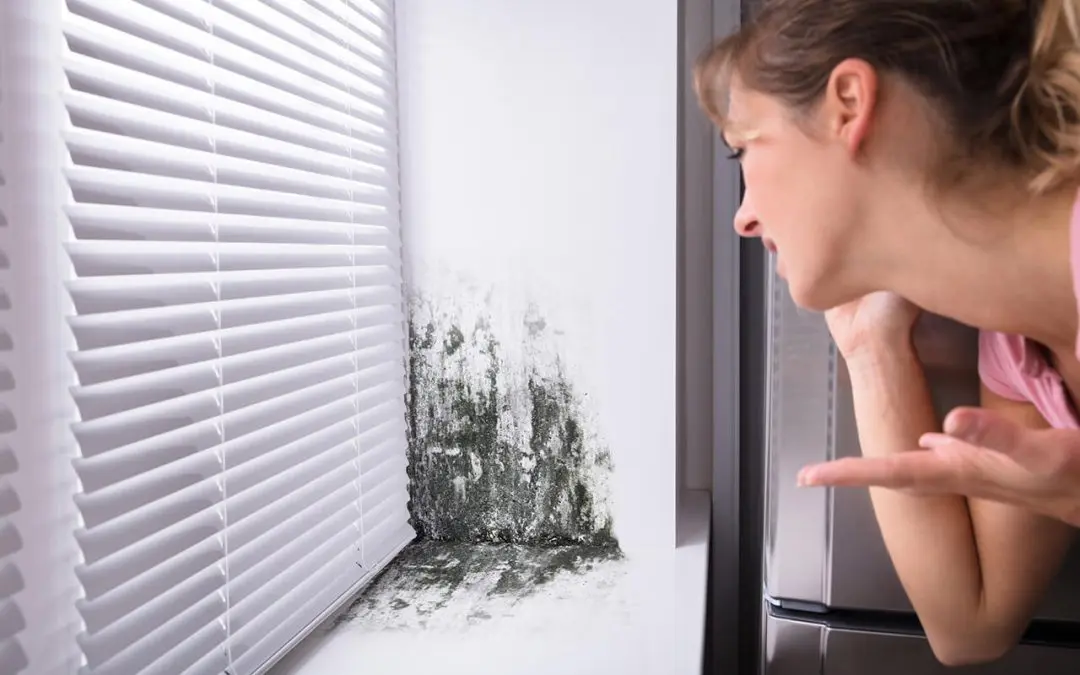Mold growth in your home can harm your health, damage your property, and even decrease the value of your home. Unnoticed mold growth could escalate into significant issues. The good news is that you can catch and address mold problems early if you know what to look for. Let’s walk through the signs of mold growth along with answers to common questions to help you stay informed.
Signs of Mold Growth: Strange Odors You Can’t Pinpoint
One of the most common early signs of mold is a persistent musty or earthy smell. This odor often lingers in areas like basements, bathrooms, or laundry rooms, but it can appear anywhere moisture tends to accumulate. If you’ve noticed an unpleasant smell that cleaning doesn’t fix, mold could be hiding behind walls, under flooring, or in other concealed areas.
Unexplained Health Symptoms
Mold doesn’t just affect your home; it impacts your health, too. Symptoms like sneezing, coughing, itchy eyes, and skin irritation are often associated with mold exposure. If these symptoms improve when you leave your home or get worse indoors, mold might be the culprit. Some types of mold can also trigger asthma attacks or exacerbate other respiratory issues.
Visible Spots or Stains
Mold comes in various colors, including black, green, white, and orange or pink. If you see spots or stains on walls, ceilings, or around windows, don’t ignore them. These can indicate active mold growth, particularly in damp areas like bathrooms, kitchens, or basements. Even small patches of discoloration are worth investigating further.
Recurring Moisture Problems
Mold thrives in environments with high humidity or frequent moisture. If you’ve experienced leaks, flooding, or condensation issues, these can create the perfect breeding ground for mold. Keep an eye out for water stains, bubbling paint, or warped surfaces, as these are often signs that moisture—and possibly mold—is present.
Signs of Mold Growth Include Peeling or Bubbling Paint or Wallpaper
When moisture gets trapped behind walls, it can cause paint or wallpaper to bubble, peel, or crack. This often goes hand-in-hand with mold growth, especially if the issue has been ongoing. If you notice changes to your walls or ceilings, it’s a good idea to investigate what’s happening beneath the surface.
Condensation on Surfaces
Excess condensation on windows, pipes, or walls is a red flag for high humidity levels, which mold loves. This is especially true when warm indoor air meets cooler surfaces in colder months. If condensation becomes a regular occurrence, it’s worth addressing before it leads to bigger problems like mold growth.
Gutters and Roof Issues
Clogged gutters or damaged roofs can lead to water pooling near your home or seeping inside, creating an environment for mold to grow. If you’ve noticed water stains on your ceiling or upper walls, it’s essential to inspect your roof and gutter system.
Mold in Hidden Spaces
Sometimes, mold grows in areas out of sight, such as inside HVAC systems, under carpeting, or behind appliances. If you detect any of the above signs but don’t see visible mold, call a professional to assess the less accessible areas.
Recognizing the signs of mold growth early will save you time, money, and stress. Don’t wait to take action if you notice musty smells, discoloration, or health symptoms. Stay proactive, and you’ll protect your home and health from mold’s effects.
FAQs About Signs of Mold Growth
How does mold grow?
Mold requires three main ingredients to thrive: moisture, a food source (like wood, drywall, or fabric), and the right temperature. Homes with humidity levels above 60% or recurring water issues provide an ideal environment for mold growth.
What health issues can mold cause?
Mold exposure can trigger respiratory problems, allergies, and skin irritation. In some cases, it can lead to more serious issues like asthma attacks or chronic sinus infections. If you or your family are experiencing unexplained health symptoms, it’s worth considering mold as a potential cause.
Can I clean mold myself?
You can often clean mold with soap and water or a mold-specific cleaner for small areas, such as around sinks or on tiles. For larger infestations or mold that’s inside walls or HVAC systems, it’s best to call a professional for thorough and safe removal.
How can I prevent mold in my home?
Reducing indoor humidity is key. Use dehumidifiers, improve ventilation in bathrooms and kitchens, and promptly address leaks or water damage. Keeping gutters clean and directing water away from your foundation can also help prevent mold growth.
Jones & Cooper Home Inspections provides inspections to homebuyers and sellers in the Metro Louisville area. Contact us to schedule our services.

